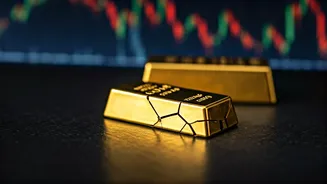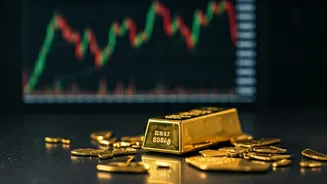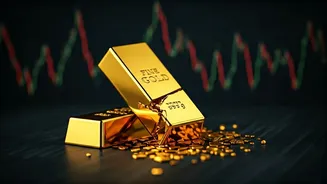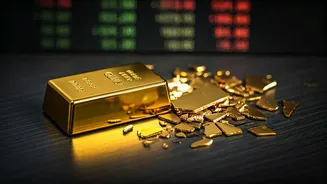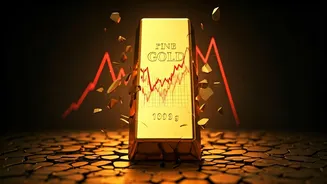The Decadal Plunge
The gold market witnessed its most significant single-day loss in the last ten years, causing consternation among investors and analysts alike. This dramatic
fall was a stark reminder of the volatile nature of the gold market, which can be affected by various global economic forces. This decline's severity underscored the sensitivity of gold prices to shifts in economic outlooks, geopolitical events, and currency valuations. The magnitude of the drop prompted a closer look at the underlying reasons and potential implications for investors holding gold as part of their portfolios. The decline triggered a surge in discussions concerning the stability and future of gold as a secure investment and the impact of broader market trends on the precious metal.
Factors Behind the Fall
Several converging factors contributed to the recent decrease in gold prices. A strengthened US dollar played a crucial role, as the price of gold is often inversely correlated with the dollar's value. Economic data releases and investor sentiment also influenced this movement, with positive economic indicators often diminishing gold's appeal as a safe-haven asset. Rising interest rate expectations, driven by inflation concerns, provided further pressure on gold, as higher rates typically make other investments, like bonds, more attractive. Furthermore, geopolitical developments and shifts in market risk perceptions influenced trading decisions, with some investors shifting from gold to assets offering higher returns in a more favorable economic environment. The confluence of these elements created a perfect storm, pushing gold prices down and highlighting the multifaceted forces that impact the market.
Expert Predictions: Diverse Views
Experts hold a wide array of viewpoints on the future of gold prices following this significant downturn. Some analysts take a bearish stance, predicting further decreases due to the continuation of the factors contributing to the decline. Their analysis may hinge on the expectation of sustained dollar strength and the likelihood of further interest rate hikes. Other experts, on the other hand, maintain a bullish view, arguing that the recent fall is a temporary adjustment. They cite factors like persistent inflationary pressures and geopolitical uncertainties that could bolster gold's value as a safe haven. These optimistic forecasts often anticipate a rebound in gold prices as the economic climate evolves. A third group of experts offers a neutral perspective, indicating a cautious outlook. They suggest that the gold market may stabilize or experience modest fluctuations until clearer indications of global economic direction emerge. Their cautious approach reflects the complexity of the current market conditions.
Influences on Gold's Future
Several crucial elements are expected to shape gold prices in the coming months and years. Global economic conditions, including GDP growth and inflation rates, will continue to play a pivotal role, with rising inflation often driving demand for gold as a hedge against currency devaluation. Monetary policy decisions made by central banks, especially the US Federal Reserve, will also substantially affect gold prices. Changes in interest rates and quantitative easing measures are directly tied to gold's attractiveness. Geopolitical events and the degree of global uncertainty will also sway market sentiment. Increased instability typically encourages investment in gold, which is perceived as a secure asset. Furthermore, shifts in investor behavior and market sentiment, influenced by economic data releases and news, will play an important role, potentially causing considerable price fluctuations. These variables collectively create a dynamic environment that calls for careful and ongoing assessment.
Investment Strategies and Outlook
Given the volatility, investors should evaluate their strategies. Those already holding gold may have various options. They could choose to hold their investments, betting on a future rebound, or they might consider diversifying their portfolios to minimize risk. Investors looking to enter the gold market are presented with unique challenges. They must carefully assess prevailing market conditions and their risk tolerance. Investment decisions need to be grounded in comprehensive market research, taking into account expert advice and economic forecasts. Whether holding, adjusting, or entering the market, a well-defined strategy and a long-term perspective will be key to managing the associated risks and potential rewards. Keeping a close watch on market trends and expert analysis is pivotal for making informed decisions. Continuous evaluation of the prevailing global economic climate is critical for sound investment practices.
